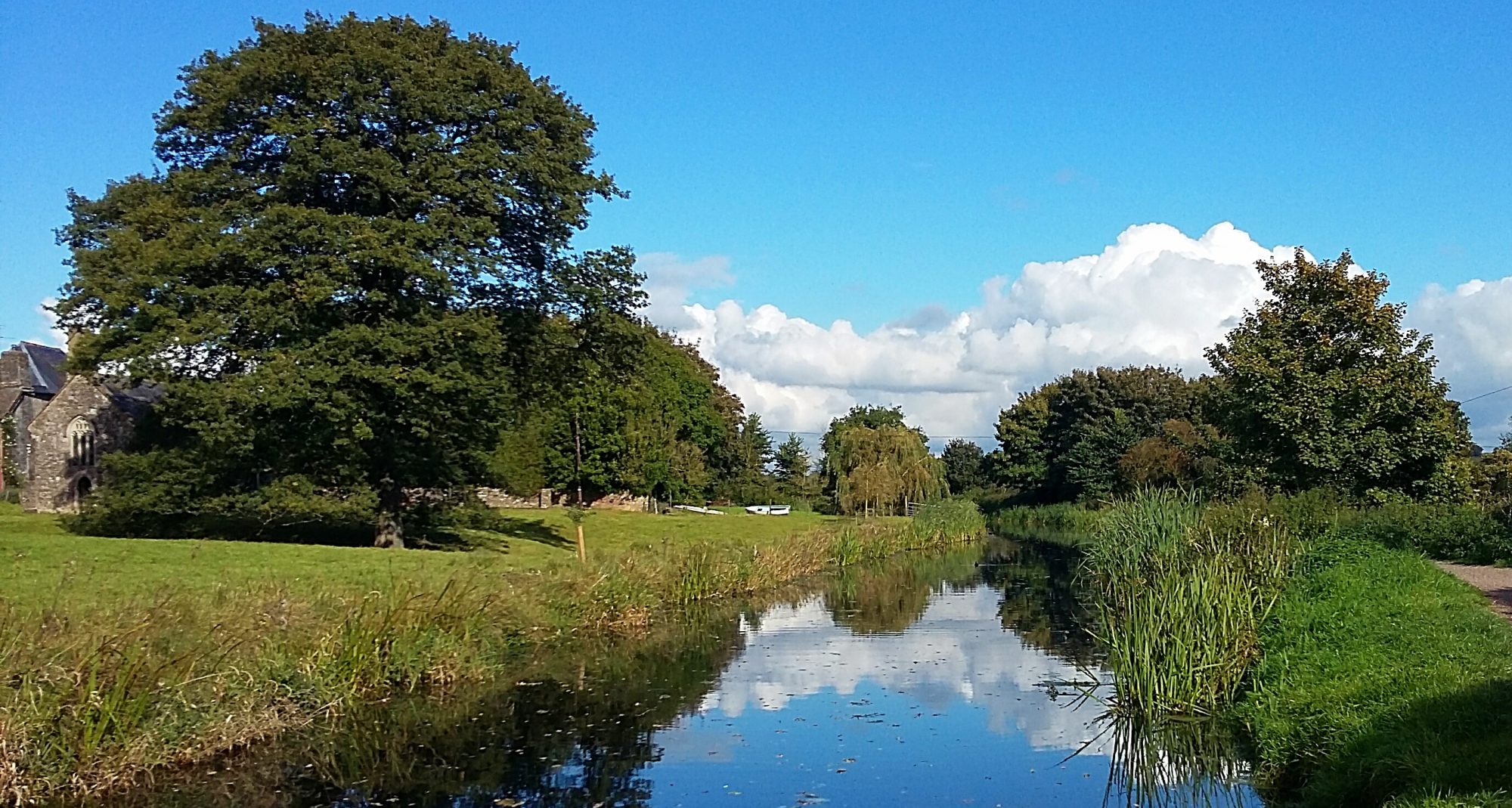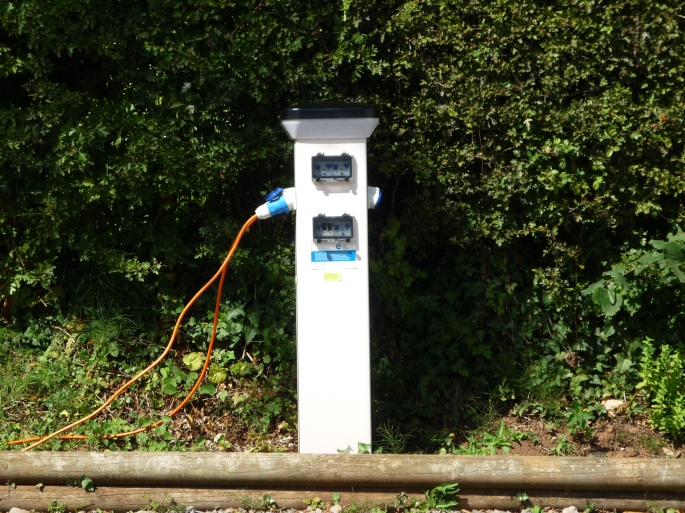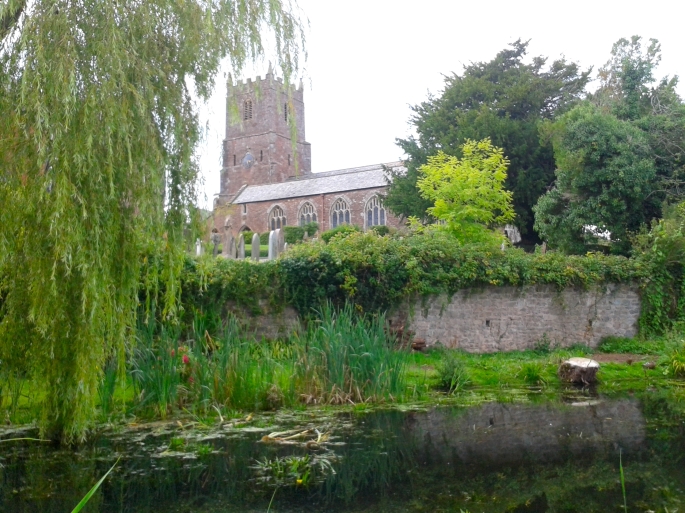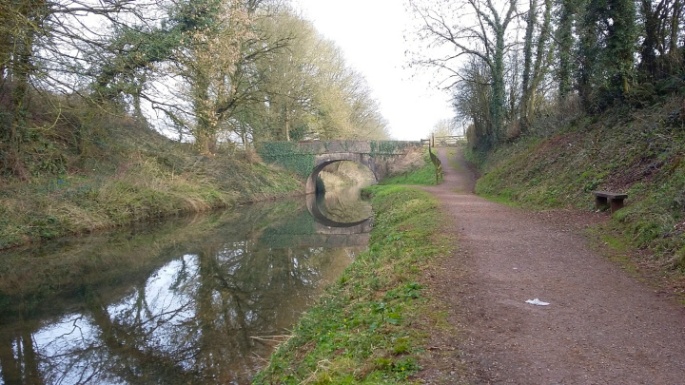
Situated on the edge of the idyllic Grand Western Canal in Devon, between Fossend and Fenacre bridges are the ruins of Canonsleigh Abbey (sometimes also called Canonsleigh Priory). There isn’t much left of the original site but the ruins that remain, provide a small glimpse into the importance of the Abbey and its purpose in Medieval times. The remains are now a combination of Grade two listed and scheduled monuments, protected by Historic England, meaning that they cannot be changed or destroyed.


An Abbey/Priory has been in existence on the site for almost a thousand years, but the exact date of its original creation is uncertain. The closest determination is that some time around 1161 and 1173 a Royal confirmation for a Priory on the site was granted. It is thought however, that a Priory may well have been in operation before that date. In 1086 Walter I de Claville, a Frenchman from de Clavile in Rouen, France was gifted the land in the area of “Leigh” by William the Conqeror after his success at the Battle of Hastings. The landowner at the time had been a female Saxon called Aelfrun, a fact documented in the Domesday book in 1086.


The Priory at Leigh became known as Canonsleigh. It was a small Priory of Augustinian Canons/Priests, with just twelve in the order to start with, and was dedicated to St John the Evangelist and the Virgin Mary. It operated as most Priory’s did in those days, with the Canons/Priests having ties to neighbouring villages such as Sampford Arundel, Netherton and Pugham. There were areas for prayer, gardens and kitchens. The Priory was subsidised by the Plympton Augustinian Priory, sadly however this had an impact on the Priory, and the it eventually found itself in financial difficulties. Isabella de Fortibus and the Countess of Gloucester (a dowager called Matilda, who wanted a memorial for her late husband), set about a chain of events that would see the Priory given over to them and turned into a nunnery. In 1284, after nine days of negotiations, the Canons were forced from the site by Bishop Quivel and men armed with bows and arrows. Canonsleigh Priory then became known as Canonsleigh Abbey, formally ending the Augustinian order at the site.

Canonsleigh Abbey was set up for around forty Canonesses, but their life at the Abbey wasn’t easy, and like the Canons/Priests before them they suffered hardship. They drew income from a variety of sources, including their relationship with Burlescombe Village Church, and donations from wealthy landowners, but it wasn’t enough. Money that had been set aside in the Bishop’s treasury by Matilda was borrowed by King Edward I, and it took the Canonesses fifty years of fighting to get it back. Eventually King Edward III (Edward I Grandson), returned the funds.



In the 1500’s life at Canonsleigh Abbey became even more difficult. Henry the VIII ordered the dissolution of all Convents, Friaries, Monasteries and Abbeys between 1536 and 1541 in England, Wales and Ireland. This act saw thousands of religious buildings razed to the ground, and income seized from the respective religious chapters. Canonsleigh Abbey didn’t escape, and even though it managed to carry on for a number of years after the Act was created it finally met its demise in September 1539, when the Abbey was razed to the ground and the Canonesses pensioned off.



Nowadays, Canonsleigh Abbey/Priory, is a small cluster of ruinous stone buildings that are slowing being claimed by ivy, trees and bushes. Many don’t know of its existence unless they happen to know someone who lives in the area. There has been much discussion about what buildings do remain on the now abandoned site. We know that Canonleigh Gatehouse exists, standing away from the other ruins, surrounded by modern builds. Amongst the other ruins, called the eastern ruins of the Abbey, it’s documented that there’s a Leat (millstream/artificial watercourse), a Reredorter (possible waste channel from privies and kitchens) and a maybe even a mill, as well as walls, partial buttresses, and a ‘room’. Thoughts are that one of these sites may actually be a kitchen area; likely in the Gatehouse.

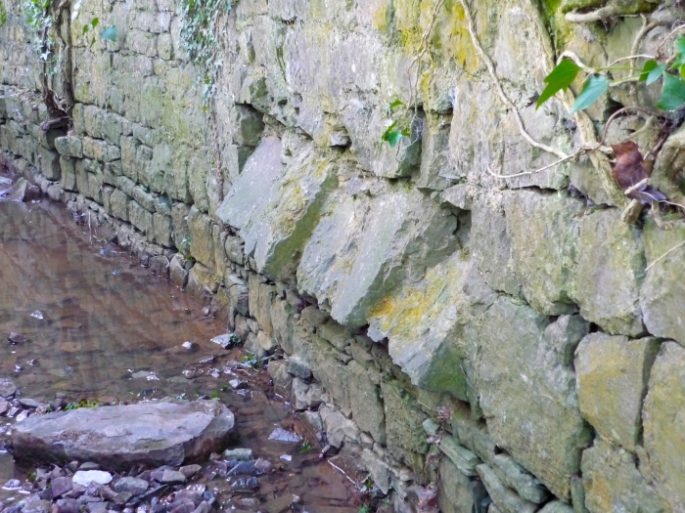

Evidence suggests that the site was much larger when in use, and housed St Theobalds Church, a chapel of Holy Trinity (now two cottages in Westleigh), Ancient chapel ruins (unnamed) at Fenacre farm, and two chapels dedicated to St Thomas the Martyr and All Saints (site location unknown). When the Lime Kilns at Cracker Corner by Westleigh quarry, were built, an ancient burial site was uncovered which included a lot of ancient bones. Experts believe that the area at Cracker Corner may have been the burial ground of St Theobalds Church.
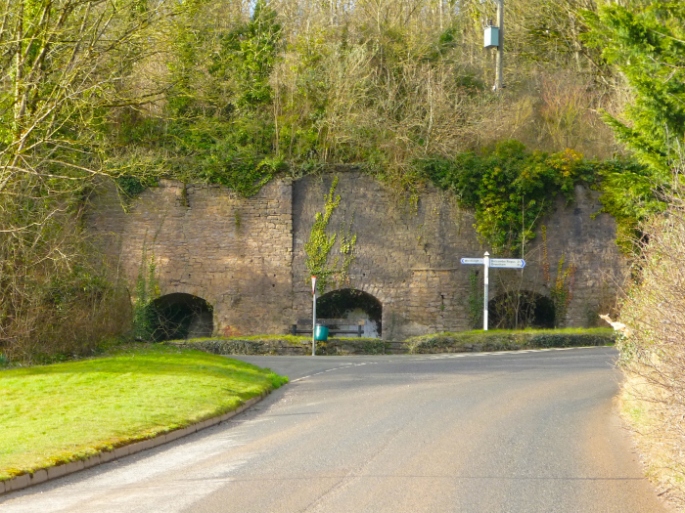

The size of the original site of Canonsleigh Abbey will never truly be known, as fields have been given over to farming, roads run next to – possibly even through – the site, and quarry workings at Westleigh have encroached upon it. But what remains is a small reminder of an incredible Medieval past, dating all the way back to the Domesday book. It is a tantalising glimpse of a history of which so much is still unknown and yet, could possibly still be discovered one day.
Author note: Access to Canonsleigh Abbey is via public footpaths/fields. Some of these fields contain livestock (horses and sheep), so care should be taken, especially with closing gates. Dogs should be kept on leads. Whilst the Abbey is fascinating, it’s an ancient and ruinous building, sometimes there are stone falls, and climbing the ruins should be avoided. As an ancient/protected monument it should be treated with care. Please also note that part of the Abbey is on private property, and only accessible with landowner permission.
Article by Chrissie Parker, We Love Mid-Devon
Photos by Chrissie Parker.
All articles on this blog are the property of the authors and We Love Mid-Devon. Whilst we are happy for you to share, No articles are to be reproduced, copied or screenshot without the permission of the author. Please contact us if you wish to re-produce in a publication.
